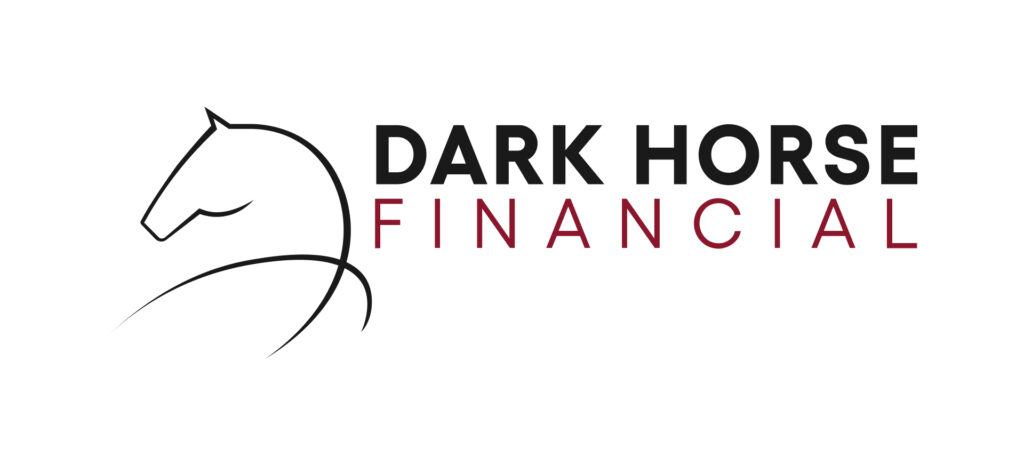Key Takeaways
- Overdrafts help financial planners cover expenses during income gaps caused by delayed client payments or seasonal fluctuations.
- They provide stability when earnings are irregular, ensuring fixed costs like rent and salaries are always paid.
- Financial planners can be approved for unsecured overdrafts, with limits up to $500,000, with a no-documentation application process.
- Financial planners can use unsecured overdrafts to access funds for marketing, hiring, or professional development without waiting for savings.
- Overdrafts ensure ASIC fees, insurance, and compliance costs are covered on time, avoiding penalties.
- A financial planning loan, like an overdraft, prevents disruptions in advisory services, maintaining trust and reliability with clients.
- Financial advisory loans, like overdrafts, can help support growth and expansion efforts without depleting cash reserves.
- These facilities also help improve access to working capital and provide businesses with a competitive advantage in the market.
- Interest is charged only on the amount used, which can make overdrafts more cost-effective for short-term needs.
- Once approved, funds are available instantly without reapplying, ideal for emergencies.
- Unlike term loans, overdrafts allow flexible repayments with no rigid monthly schedule.
- Responsible use of an overdraft can improve a firm’s credit profile, aiding future financing needs.
- Planners should assess their needs carefully before applying. Seeking help from a lending expert like Dark Horse Financial can ensure they get a solution that aligns with their needs and goals.
Financial planners in Australia often face fluctuating income due to seasonal client demands, delayed fee payments, or unexpected expenses. To bridge these gaps, many turn to financial advisory loans, including overdraft facilities, as a flexible financing solution.
This article explores the key reasons financial planners use overdrafts, how they support business operations, and why they are a popular choice for managing cash flow in financial planning firms.
What Is an Overdraft?
An overdraft is a business line of credit linked to a business transaction account, allowing financial planners (or any business) to withdraw more money than is currently available, up to an approved limit. It acts as a financial safety net, providing immediate funds when cash flow is tight.
Financial planners can be approved for unsecured overdrafts, with limits up to $500,000 with a no document application process.
Key Features of Overdrafts:
- Revolving Credit: Once repaid, the funds become available again without reapplying.
- Interest-Only on Used Amount: You pay interest only on the overdrawn balance, not the full limit.
- No Fixed Loan Term: Unlike traditional loans, overdrafts don’t have set repayment dates.
- Instant Access: Funds are available whenever needed, making them ideal for emergencies.

Why Do Financial Planners Need Overdraft Facilities?
Financial planners operate in an industry where income can be irregular. Overdrafts provide a safety net, allowing planners to access cash quickly when needed. Here are some of the reasons financial planners use overdrafts:
1. Managing Cash Flow Gaps in Financial Advisory Firms
How can overdrafts help financial planners manage cash flow? Financial advisory firms often experience fluctuations in cash flow due to the nature of their billing cycles. Some of the main challenges include:
- Delayed client payments: Some clients may pay advisory fees late, disrupting cash flow.
- Seasonal fluctuations: Certain times of the year (e.g., post-tax season) may see reduced income.
- Unexpected expenses: Sudden costs like software upgrades, compliance fees, or staff training can strain finances.
Overdraft facilities for financial planners in Australia offer a flexible solution to bridge these gaps, ensuring that the firm can meet its financial obligations, such as payroll, rent, and other operational costs, without delay. This immediate access to funds helps maintain business continuity and client trust.
2. Managing Seasonal Income Variations
Many financial planners earn income through:
- Fee-for-service models (one-off or ongoing fees)
- Commission-based earnings (which can be irregular)
- Retainer agreements (steady, but may not cover all costs)
Since revenue isn’t always predictable, an overdraft helps smooth out these variations, allowing planners to meet operational costs.
3. Handling Short-Term Business Opportunities
Opportunities to grow a financial planning business can arise unexpectedly, such as:
- Attending industry conferences (networking and professional development)
- Marketing campaigns to attract new clients
- Hiring additional staff during peak periods
With an overdraft facility, planners can seize these opportunities without using up cash reserves, ensuring they stay competitive.
4. Covering Compliance and Regulatory Costs
The financial planning industry in Australia is highly regulated, with costs including:
- ASIC licensing fees
- Professional indemnity insurance
- Compliance software and training
An overdraft ensures these mandatory expenses are covered on time, avoiding penalties or operational disruptions.
5. Avoiding Disruptions in Client Service
Financial planners must maintain trust and reliability with clients. If cash flow shortages lead to delayed services (e.g., postponed financial reports or missed meetings), client satisfaction may suffer. An overdraft ensures that planners can continue delivering high-quality service.
6. Supporting Business Growth and Expansion
As financial planning firms grow, they may require additional resources for marketing, hiring staff, or expanding services. Overdrafts provide the working capital to take on growth initiatives, like taking in new staff, paying growing wage bills, initiating marketing efforts, and more.
7. Mitigating Financial Stress
Financial uncertainty can lead to stress and can impact decision-making. Overdrafts provide a financial cushion, reducing the pressure during challenging times. This peace of mind allows financial planners to focus on delivering quality services to their clients, rather than being preoccupied with immediate financial concerns.
8. Offering Competitive Advantage
Having access to an overdraft facility can provide a competitive edge. It enables financial planners to invest in client acquisition strategies, technology upgrades, or staff development without waiting for funds. This proactive approach can make a firm stand out in a competitive market.
9. Simplifying Financial Management
Overdrafts can simplify financial management by consolidating borrowing needs into a single facility. This simplicity reduces administrative burdens and allows financial planners to focus on core business activities.

How Overdrafts Support Financial Planning Businesses
What are the benefits of overdrafts for financial advisory firms? Here’s how overdrafts help:
1. Only Pay for What You Use
Overdrafts charge interest only on the amount used. This makes them a cost-effective solution, especially for short-term needs.
2. Quick Access to Funds
Once approved, an overdraft is always available, allowing planners to withdraw funds (up to a limit) instantly when needed.
3. No Fixed Repayment Schedule
Overdrafts are revolving credit facilities, meaning funds can be repaid and reused as needed. There are no rigid monthly repayments (unlike term loans), and interest is charged only while the overdraft is active.
4. Helps Maintain Business Credit Rating
Using an overdraft responsibly (i.e., repaying promptly) can improve a business’s credit profile, making it easier to secure larger loans in the future.
Are Overdrafts Common for Financial Planning Businesses?
Yes, many financial planners in Australia use overdrafts as part of their financial planning strategy. Reasons for their popularity include:
- Flexibility: Unlike traditional loans, overdrafts can adapt to changing business needs.
- Emergency Backup: Provides peace of mind for unexpected shortfalls.
- Supports Growth: Enables planners to invest in expansion without waiting for savings.
Can Overdrafts Solve Short-Term Liquidity Issues for Planners?
Absolutely. Overdraft solutions for financial advisors managing cash flow are ideal for:
- Paying suppliers or contractors before client fees arrive
- Covering payroll during slow revenue periods
- Handling tax bills or unexpected costs
However, they should not be used for long-term financing, as interest costs can accumulate. For larger investments (e.g., office upgrades), a business loan may be more suitable.
How Financial Planners Can Apply for Overdrafts
- Assess Your Needs: Start by going over your working capital and cash flow needs. This will help you determine the overdraft limit you’ll require.
- Apply Quickly Online: Fill out our online form in minutes and send in your application. We’ll respond to you promptly, and we’ll discuss your financial situation and needs.
- Approval Process: Once your application is finalised, we’ll submit it to the right lender on your behalf. Approval can be as fast as 24-48 hours.
- Get Approved: Once your overdraft is approved, finalise it by signing the agreement. Soon after, you’ll be able to access your overdraft limit anytime you need funding.
Key Considerations When Applying for Financial Planner Finance in Australia
Before securing an overdraft facility, financial planners should:
- Assess Cash Flow Needs: Estimate how much liquidity is required monthly.
- Have a Repayment Plan: Avoid relying too heavily on overdrafts to prevent debt buildup.
- Seek Help From Experts: Contact Dark Horse Financial to apply for an overdraft that aligns with your financial goals and needs.
Final Word
For financial planners in Australia, managing cash flow efficiently is key to business success. Overdraft facilities provide a flexible, cost-effective way to navigate income fluctuations, unexpected expenses, and growth opportunities.
By using an overdraft wisely, financial advisory firms can maintain smooth operations, avoid cash flow disruptions, go after opportunities, and uphold strong client relationships.
If you’re a financial planner considering an overdraft solution, evaluate your business needs before applying. Seeking help from a lending professional like Dark Horse Financial can ensure you get a solution that aligns with your business cash flow and objectives.
Get Financial Planning Overdrafts Today
We specialise in helping financial planners secure the right financing solutions. Contact us today to explore overdraft facilities tailored to your advisory firm’s needs.





